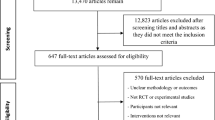Abstract
We hypothesize that clinical recognition rates for obstructive sleep apnea-hypoapnea syndrome (OSAHS) are influenced by comorbidity and demographic factors. Data on medical disorders, symptoms of sleep disorders, and cardiovascular risk factors gathered from 15,699 individuals in the Sleep Heart Health Study were compared. Participants were classified into three groups: those with a self-reported physician diagnosis of OSAHS, those with self-reported physician-diagnosed and -treated OSAHS, and those reporting both frequent snoring and daytime sleepiness (two-symptom group). Among all participants, 4.1% reported two symptoms (range across sites: 1.55 to 7.23%), whereas 1.6% reported a physician diagnosis of OSAHS (range: 0.66 to 2.88%) and 0.6% reported physician diagnosis and treatment (range: 0.11 to 0.88%). Recognized OSAHS groups were similar to the two-symptom group in age, having a sleeping partner, measured blood pressure, total cholesterol, and race. In a logistic model that included age along with characteristics found to vary significantly among the three groups (gender, body mass index [BMI], high-density lipoprotein cholesterol levels, hypertension), only male gender and BMI were increased in those with physician-diagnosed and -treated OSAHS. We conclude that disparities (especially in women and in those with lower BMI) exist between current recognition rates for OSAHS and the estimated prevalence by symptom report across the United States.
Similar content being viewed by others
References
American Academy of Sleep Medicine. Sleep-related breathing disorders in adults: recommendations for symptom definition and measurement techniques in clinical research. Sleep 1999;22:667–689
Young T, Evans L, Finn L, Palta M. Estimation of clinically diagnosed proportion of sleep apnea syndrome in middle-aged men and women. Sleep 1997;20:705–706
Dement WC, Netzer NC. Primary care: is it the setting to address sleep disorders?. Sleep Breathing 2000;4:1–6
Quan SF, Howard BV, Iber C, Kiley JP, Nieto FJ, O’Connor GT, Rapoport DM, Redline S, Robbins J, Samet JM, Wahl PW. The Sleep Health Health Study: design, rationale, and methods. Sleep 1997;20:1077–1085
Young T, Palta M, Dempsey J, Skatrud J, Weber S, Badr S. The occurrence of sleep-disordered breathing among middle-aged adults. N Engl J Med 1993;328:1230–1235
Strohl KP, Redline S. Recognition of obstructive sleep apnea. Am J Respir Crit Care Med 1996;154:279–289
Bradley DT, Young T, Strohl KP. ATS/ASDA statement on health outcomes research in sleep apnea. Am J Respir Crit Care Med Sleep 1998;157:335–341
Newman AB, Nieto FJ, Guidry U, Lind BK, Redline S, Shahar E, Pickering TG, Quan SF. The relationship of sleep disordered breathing to cardiovascular disease risk factors: the Sleep Heart Health Study. Am J Epidemiol 2001;54:50–59
Gottlieb DJ, Yao Q, Redline S, Ali T, Mahowald MW. Does snoring frequency predict sleepiness independently of apnea and hypopnea?. Am J Respir Crit Care Med 2000;162:1512–1517
Nieto FJ, Young TB, Lind BK, Shahar E, Samet JM, Redline S, D’Agostino RB, Newman AB, Lebowitz MD, Pickering TG. Association of sleep-disordered breathing, sleep apnea, and hypertension in a large community-based study. JAMA 2000;283:1829–1836
Shahar E, Whitney CW, Redline S, Lee ET, Newman AB, Nieto FJ, O’Connor GT, Boland, Schwartz JE, Samet JM. Sleep-disordered breathing and cardiovascular disease. Am J Respir Crit Care Med 2001;163:19–25
Baldwin CM, Griffin KA, Nieto FJ, O’Connor GT, Walsleben JA, Redline S. The association of sleep-disordered breathing and sleep symptoms with quality of life in the Sleep Heart Health Study. Sleep 2001;24:96–105
Author information
Authors and Affiliations
Corresponding author
Rights and permissions
About this article
Cite this article
Kapur, V., Strohl, K.P., Redline, S. et al. Underdiagnosis of Sleep Apnea Syndrome in U.S. Communities. Sleep Breath 6, 49–54 (2002). https://doi.org/10.1007/s11325-002-0049-5
Issue Date:
DOI: https://doi.org/10.1007/s11325-002-0049-5




